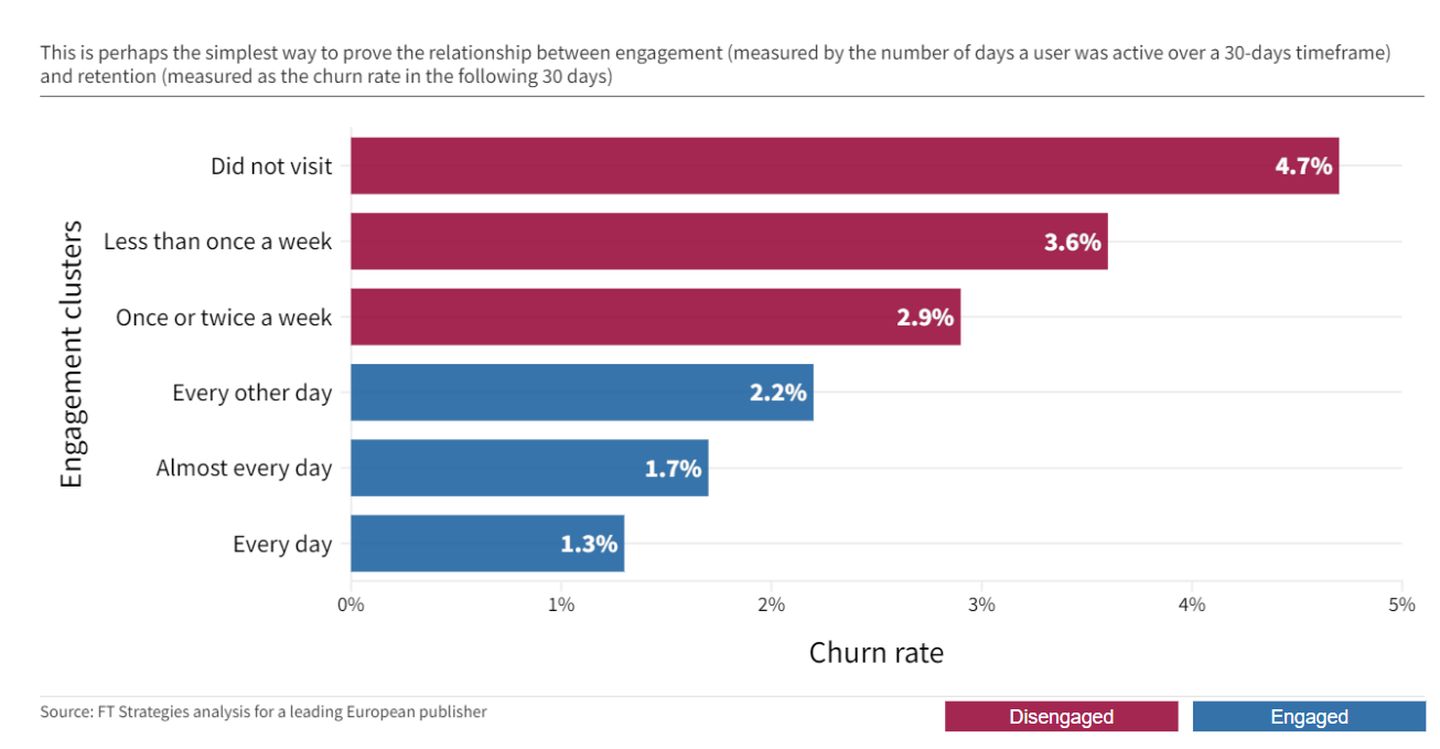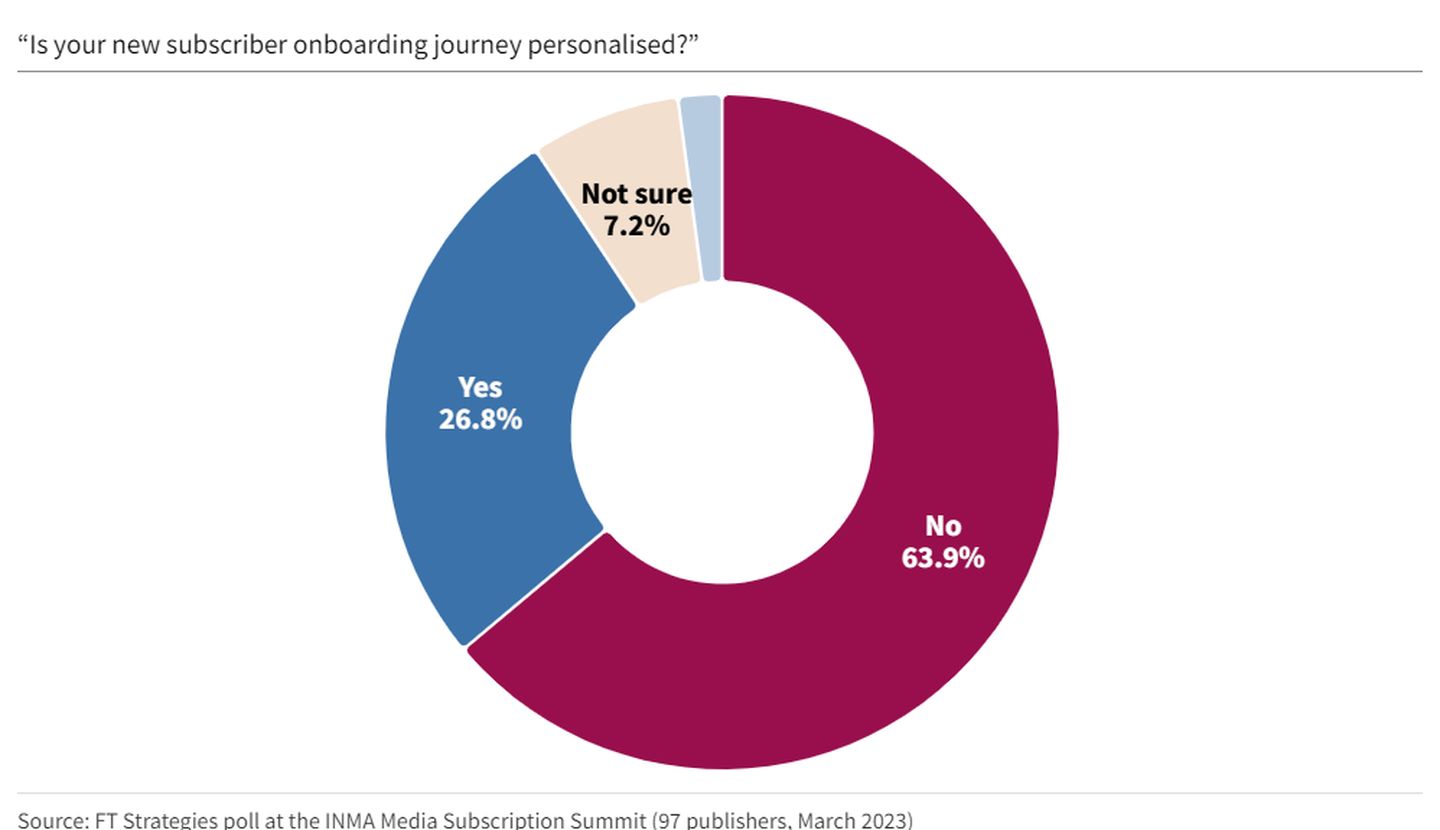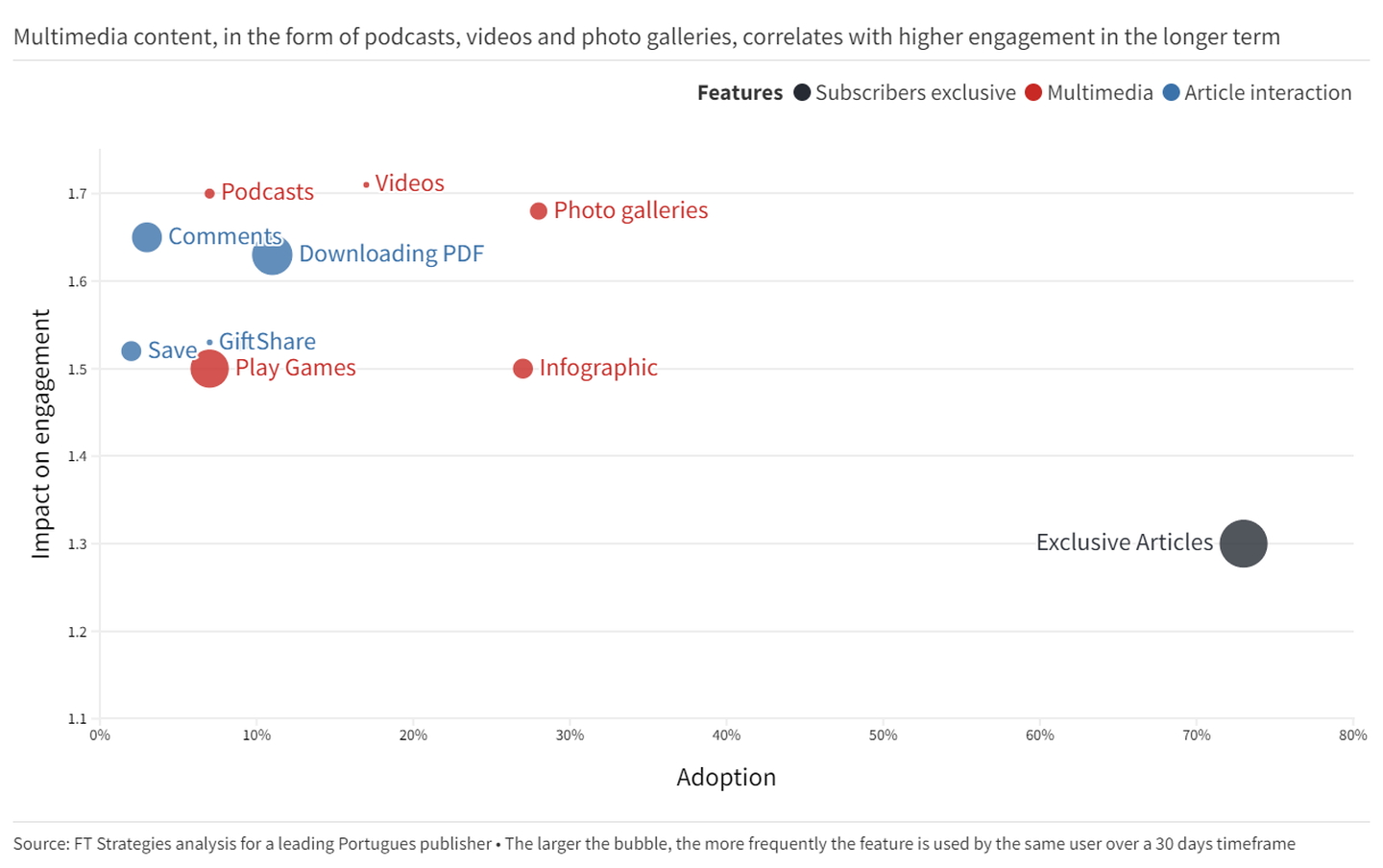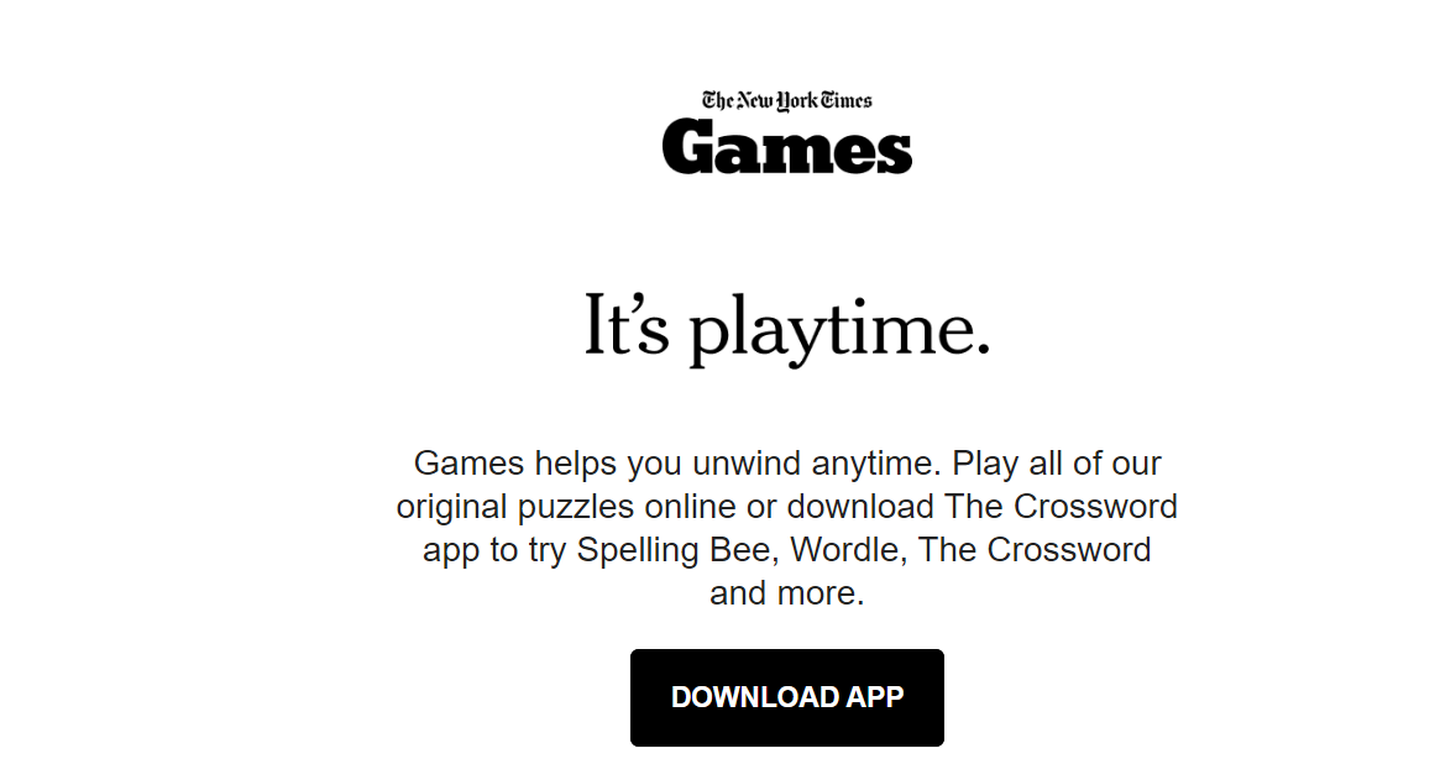-
Emanuele Porfiri
Please read this article first (3 mins) on how to get started on your engagement metric journey.
What can you do with an engagement metric?
As shown in my previous article, measuring customer engagement doesn’t have to be difficult, there are many different ways in which you can kickstart and move along your engagement scoring journey and simple intuitive solutions are generally preferred to begin with.
The chart below is a recap of how we measure engagement for one of our clients, a leading European publisher, and how we validated it against retention. The clear inverse relationship between engagement (measured by the number of active days over a 30-days time frame) and churn (measured as the churn rate in the following 30 days) gave us confidence in the metric.
What now?





You can start looking at the distribution of the metric and:
- Define a threshold of engagement (‘Every other day’ in the example above) so that we can isolate ‘engaged’ users from ‘disengaged’ for specific analysis or reporting purposes
- Track the volume and proportion of engaged users over time, with the former being the original North Star goal at the FT and a staple in the FT Weekly Board report
- Create deep-dive analysis to understand what differentiates engaged and disengaged users from a demographics, product and breadth of consumption point of view.
The goal, provided engagement drives retention, is to increase the number and proportion of engaged users in order to grow lifetime value. Request a copy of the workshop we delivered at the INMA Media Subscription Summit below, if you need a quick and simple refresher of why retention is a key driver of LTV).
Download our workshop presentation
Fill in the form below to access our workshop presentation from the INMA Media Subscription Summit for you to be able to read offline.
One of the most important times to drive engagement is at the beginning of a subscribers’ lifetime, during the onboarding process, but how many of us are personalising or optimising it?





Not many.
The chances are that you haven’t personalised your onboarding too (63.9% of our sample of 97 global publishers) and whilst offering a tailored journey to each individual can be a daunting technical challenge, you can at least optimise it by identifying which products are more likely to drive engagement and promote their adoption in the very early stages.
As an example, the Washington Post overhauled its subscriber onboarding process in the fall of 2022, which the company says has resulted in a 2% lift in subscriber retention and an increase in customer lifetime value.
Identify the most important features of your subscription package
Based on our sample, Newsletters are the most effective product by far with 2 in 3 publishers choosing them as a key habit forming feature.





That might be the case for your organisation too but you don’t have to guess, you can ask your readers directly or, even better, analyse your readers’ behaviour (if you track it) to understand which products are more closely related to engagement and which products your subscribers are more likely to adopt.
By combining these two data points:
- How popular a product is (proxied by the average proportion of users that use it at least once over a 30-days timeframe, x-axis below)
- How impactful a product is on engagement (proxied by how engaged a user of that product is 30 days after using it, y-axis below)
You can rank features by how ‘likely’ they are to drive adoption and generate engagement and structure your onboarding process accordingly.





Use data to inform your next onboarding journey
In the example above, it is clear that while ‘Exclusive articles’ are widely consumed (70%+ of subscribers read them on average, which is expected), they don’t drive engagement as much as other features.
Multimedia content (particularly Podcasts, Videos and Photo galleries) on the other hand, though less popular (lower adoption/consumption), have a much higher impact on engagement and could therefore be prioritised in the onboarding journey by:
- Showcasing examples, perhaps dynamically pointing to the most recent one
- Providing clear signposting guides on how to recognise them
- Giving the option to sign-up to relevant newsletter/alerts
Below is an example of how The New York Times’ promotes Games during onboarding.





Lastly, article interactions are some of the least adopted features (with less than 15% of subscribers using them on average, based on the example above) but are closely related to engagement and could therefore follow in the onboarding journey.
Regardless of the set of products and features you offer, it might be a powerful exercise to plot them on the two axes above (adoption/impact) to kickstart a conversation on your next onboarding journey A/B test. Adding a third axis (stickiness) might enrich the picture further, but that’s enough for now.
Wrap Up
There are various ways of developing a customer engagement score, all valid but not necessarily right for your specific context. Every organisation should try and build a robust and transparent framework before embarking on this journey in order to maximise the chances of a successful implementation.
If you’d like to find out more or discuss anything mentioned in this blog, feel free to reach out to me directly.
How FT Strategies can help you
FT Strategies is the consultancy from the Financial Times that works with organisations to accelerate their digital transformation and power customer growth. The FT moved fast and invested proactively to build a best-in-class technology stack that underpins its digital-first business.
We are now sharing this expertise with organisations, in publishing, media and wider sectors, to help support their transition to digital-first businesses. If you want to find out more, please do not hesitate to reach out to us.




